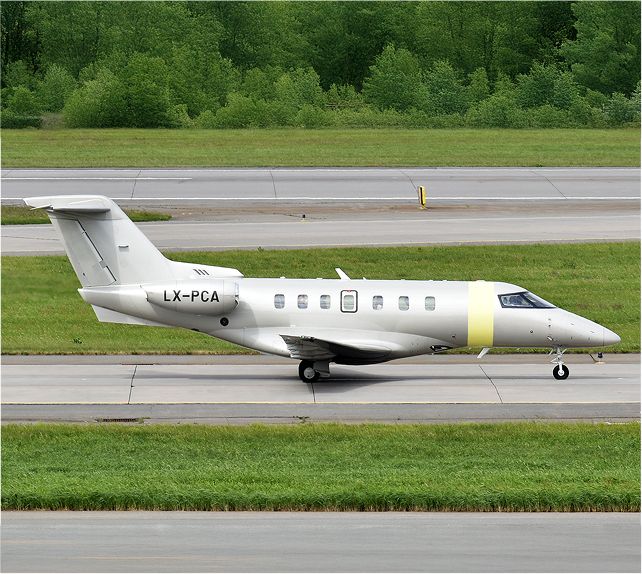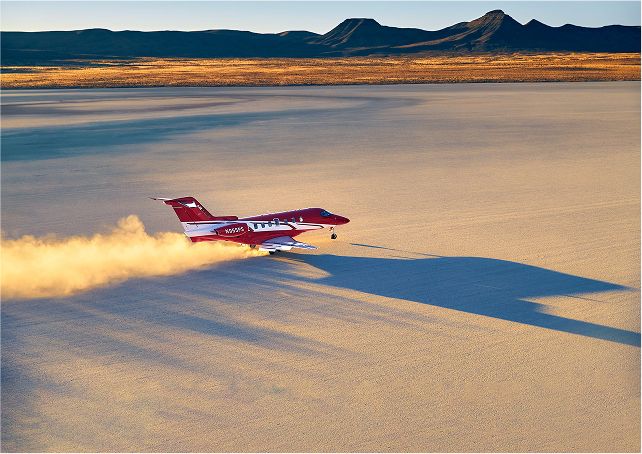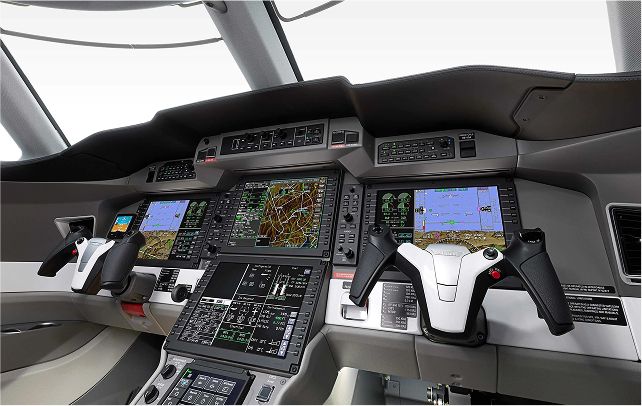
Book a Pilatus PC-24
Pilatus PC-24
Very light jet
The Pilatus PC-24 is the world’s first Super Versatile Jet™—combining jet speed with the ability to land on short, even unpaved runways. Its spacious cabin, flat floor, and large cargo door offer comfort and flexibility rarely seen in its class. Whether for business or adventure, the PC-24 brings you closer to your destination, no compromise needed.

Redefining Private Jet Versatility
Overview
The Pilatus PC-24 is the world’s first and only Super Versatile Jet™, engineered to break boundaries in private aviation. It seamlessly blends the freedom of a turboprop with the performance and comfort of a light jet.
Designed for short runways, remote locations, and fast-paced missions, the PC-24 opens access to thousands of airports that other jets simply can’t reach. Inside, a spacious flat-floor cabin, fully customizable interior, and large cargo door offer unmatched flexibility, ideal for executives, explorers, and anyone who values freedom without compromise.
Built with Swiss precision, the PC-24 delivers reliability, elegance, and adaptability in every detail. Whether you're flying for business or leisure, it gets you closer, faster, safer, and in total comfort.
Comfort That Adapts to You
Luxury interior
The PC-24’s cabin is crafted for those who demand more from private travel, more space, more flexibility, and more refinement. From its flat-floor layout to bespoke materials, every detail is designed to elevate the in-flight experience.
Spacious Flat-Floor Cabin
With a fully flat floor and generous headroom, the PC-24 offers the largest cabin volume in its class. Move freely, relax deeply, and enjoy a true sense of space on every flight, whether working or unwinding.
Modular Seating Configuration
Quickly reconfigure seating to fit business, leisure, or cargo needs. The PC-24 adapts on demand, making it as practical for executive groups as it is for family travel or gear-heavy adventures.
Large Cargo Door with Cabin Access
Unlike most jets in its category, the PC-24 features a full-size cargo door and direct cabin access to luggage. Travel with ease, knowing everything you need is just a step away, even mid-flight.
Key Specifications & Performance
Technical Characteristics
The Pilatus PC-24 is uniquely certified for operations on grass, gravel, and even dirt runways, giving you access to over twice as many airports as other light jets. With exceptional short-field performance, it can land on shorter strips than the other comparable light jets.
Performance
Maximum Cruise Speed
440 knots (815 km/h; Mach 0.72)
Maximum Range
2,000 nautical miles (3,704 km) with 4 passengers
Service Ceiling
45,000 ft (13,716 m)
Takeoff Distance
2,930 ft (893 m)
Landing Distance
2,375 ft (724 m)
Rate of Climb
4,076 ft/min
Capacity
Passengers
Up to 10 (typically 6–8 in executive configuration)
Crew
1 or 2 pilots
Cabin Volume
501 cu ft (14.2 m³)
Cabin Dimensions
Height: 5 ft 1 in (1.55 m)
Width: 5 ft 7 in (1.69 m)
Length: 23 ft (7.01 m)
Fuel & Engines
Fuel Capacity
8,405 lb (3,813 kg)
Engines
2 × Williams FJ44-4A turbofan engines
Thrust (each)
3,420 lbf
Cargo & Access
Cargo door
Large
Baggage compartment
90 cu ft, accessible in-flight
Unmatched Versatility
Key feature
Designed to serve both business and adventure, the PC-24 adapts to your mission with rugged landing gear, a cargo-ready cabin, and best-in-class runway access. It’s built to do what others simply can’t.

Landing Gear Built for the Extraordinary
Smooth runways
The PC-24’s robust trailing-link landing gear is purpose-built for the toughest runways : grass, gravel, dirt, or asphalt. Engineered to absorb impact and protect performance in demanding conditions, it allows access to over 21,000 runways worldwide.
This isn’t just a technical detail, it’s a real, visible advantage that lets you land closer to your destination, even when there’s no paved runway in sight. Rugged, reliable, and refined, it’s landing gear with a mission.

Precision, Power, Simplicity
ACE™ Cockpit
The PC-24 features the Pilatus Advanced Cockpit Environment (ACE™), developed with Honeywell to offer next-generation avionics in a streamlined, pilot-friendly interface.
Four large screens, synthetic vision, auto-throttle, and graphical flight planning provide unmatched situational awareness and control. Designed for single-pilot ops, the ACE™ blends automation with intuitive inputs, delivering a flight deck experience that’s as smart as it is safe.
Alternative Jet Options
Aircraft
Honda HA-420
Very light jet
Flying in Honda HA-420
The Honda HA-420 HondaJet combines innovation, performance, and comfort in a pioneering light jet, ideal for regional business or leisure travel.
Embraer Phenom 100E
Very light jet
Flying in Phenom 100E
The Embraer Phenom 100E offers speed, efficiency and comfort in a very light, versatile jet, making it a smart choice for regional or luxury business travel.
Cessna Citation Mustang
Very light jet
Flying in Cessna Citation Mustang
The Cessna Citation Mustang is a light jet offering seating for 4 passengers, high efficiency, and smooth performance for short-range private travel.